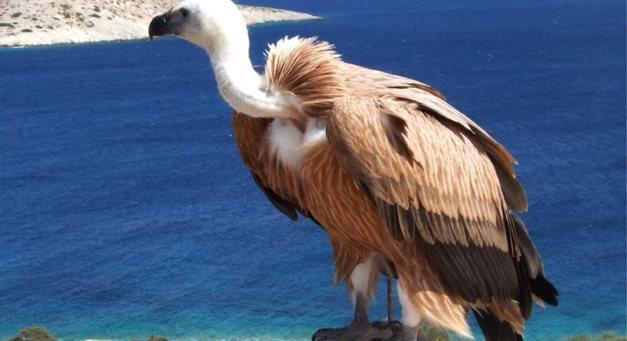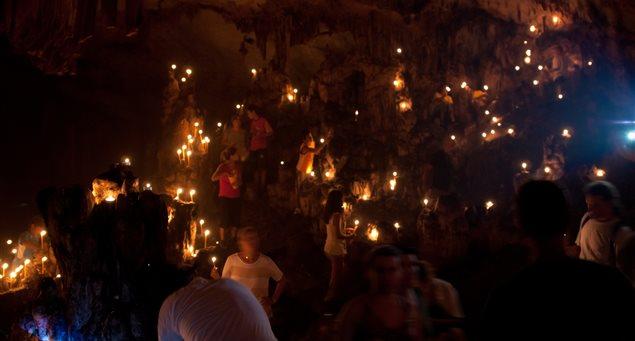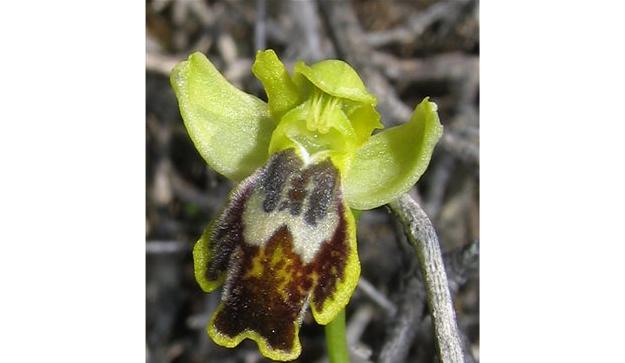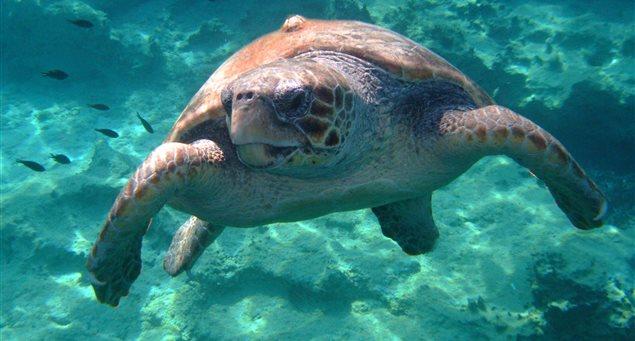
Photo credit: Lynne Neilly
Birds represent the most interesting part of Iraklia’s fauna, with over 170 recorded species, some of which are endangered and protected on a worldwide scale.
Of these, 26 are predators and find ideal refuge amid the island’s remote rock formations.
The most interesting species are the following: Griffon Vulture –2 to 3 pairs can be seen nesting on the island; Bonelli’s Eagle –one pair has been observed; Eleonora’s Falcon –observations of 30-60 pairs have been made of this species which nests at Avelonissia; Phalacrocorax –nests at Iraklia and Avelonissia; Larus Audouinii –observed during migration periods; Procellaria Diomedea –large numbers may be seen during migration; Cory’s Shearwater –large numbers can be observed during the migration period and some couples build their nests on the islets (Avelas); Levantine Shearwater –large numbers can be observed during the migration period and some couples build their nests on the islets (Avelas). Small numbers have been sighted during winter, too.
During migration, especially in September, a lot of species can be observed, the most interesting being the Lesser Spotted Eagle, the Booted Eagle, the Short-toed Snake Eagle, the Black Kite, the Egyptian Vulture, the Pallid Harrier, the Montagu’s Harrier, the Levant Sparrowhawk, the Long-Legged Buzzard, the Lanner and the Hobby. A Black Vulture has also been spotted spending his winter on the island.
The most common migrating buzzards that can be seen on the island are the Marsh Harrier and the Honey Buzzard.
During migration, some very interesting species can be observed, some of stunning beauty, like the Bee-Eater and the Roller, as well as some rare ones like the Common Crane and the Cattle Egret.
Amongst the species that nest on the island, are the Sardinian Warbler, the Crested Lark, the Kestrel, the Little Owl, the Linnet, the Yellow Legged Gull, the Pied Wagtail, the Rock Dove, the Swift, the Black-Eared Wheater, the Chucar, the Blue Rock Thrush and the Carrion Crow.
On rare occasions, the Corn Bunting and the Peregrine can be found nesting, too.
One pair of Ravens also nests on the island as well as a pair or two of Stone Curlews.
During particularly cold winters, certain species uncommon to the locale may be seen, such as the Mute Swan that can be sighted at the sea resting after a long journey, and the Calandra Lark amongst a group of Skylarks.




